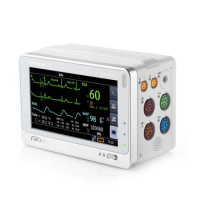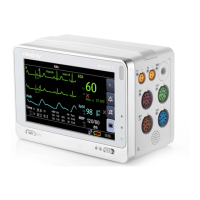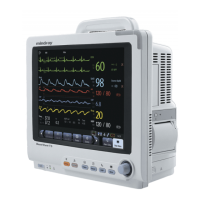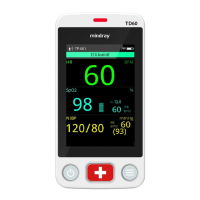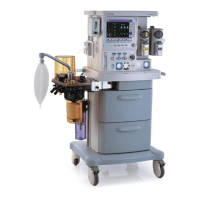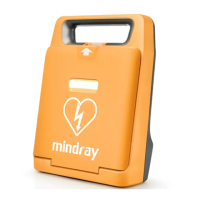Revision:1.0(2023–5–17)
76
D: Horizontal target group
E: Hyperechoic (tumor-like) target
F: Pseudocyst (10 mm in diameter) and stones
G: Pseudocyst (6 mm in diameter)
• Line target system
The TM material is embedded with eight groups of nylon line targets, which are distributed as
shown in the figure. Where,
A1-A5:
Axial and lateral resolution target groups. The distances between the lateral branches of the
groups and the acoustic window are 30 mm, 50 mm, 70 mm, 120 mm, and 160 mm,
respectively. The horizontal distances between two adjacent target lines in groups A1 and A2
are 1 mm, 5 mm, 4 mm, 3 mm, and 2 mm, and those in groups A3-A5 are 5 mm, 4 mm, 3 mm,
and 2 mm. The vertical distances between two adjacent target line centers of the axial
branches are 4 mm, 3 mm, 2 mm, and 1 mm.
B:
Dead zone target group. The center horizontal distance between adjacent lines is 10 mm, and
the distances to the acoustic window are 10 mm, 9 mm, 8 mm, 7 mm, 6 mm, 5 mm, 4 mm, and
3 mm, respectively.
C:
Vertical target group. 19 target lines with a 10 mm center distance between adjacent lines.
D:
Horizontal target groups. It contains 7 target lines, with a 20 mm center distance between two
adjacent lines.
• Simulated lesion
E:
Pseudotumor. It is located at a depth of 70-80 mm, cylinder-shaped with a diameter of 10 mm,
and parallel to the target line in axial direction.
F:
Pseudocyst and stone. The pseudocyst is cylindrical, with a diameter of 10 mm, located in a
depth of 70-80 mm, and parallel to the target line in axial direction. The stone has an irregular
shape, is located in the middle of the pseudocyst, and has a maximum size of about 4-6 mm.
G:
Pseudocyst. It is located at a depth of 47-53 mm, cylinder-shaped with a diameter of 6 mm,
and parallel to the target line in axial direction.
KS107BG ultrasound phantom
Diagnostic Ultrasound System
Service Manual
8 Appendix

